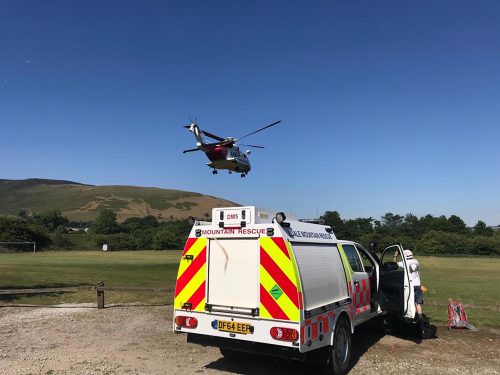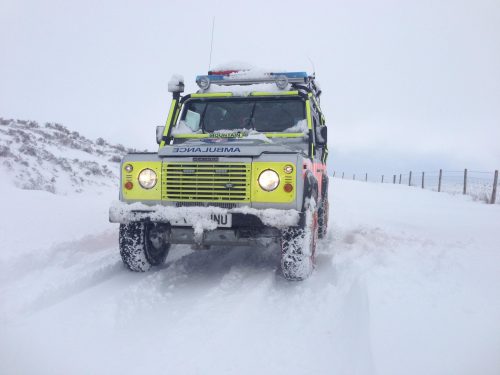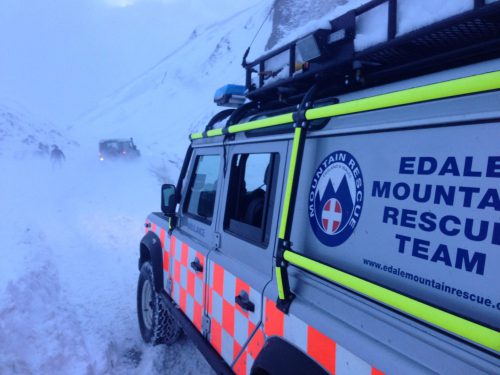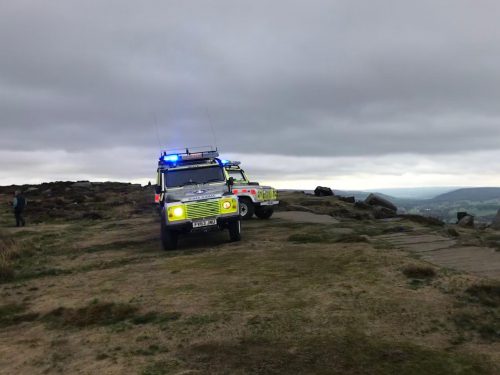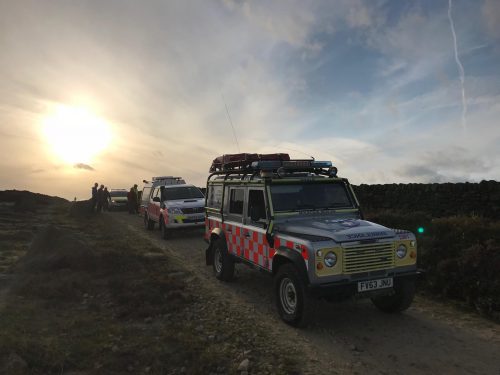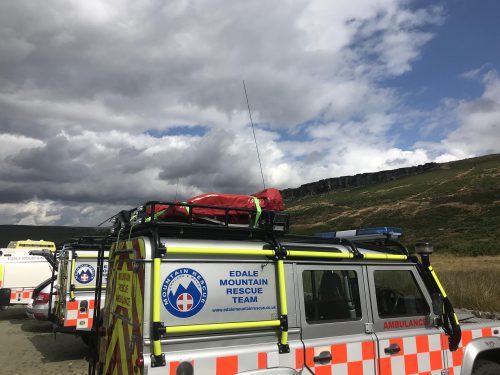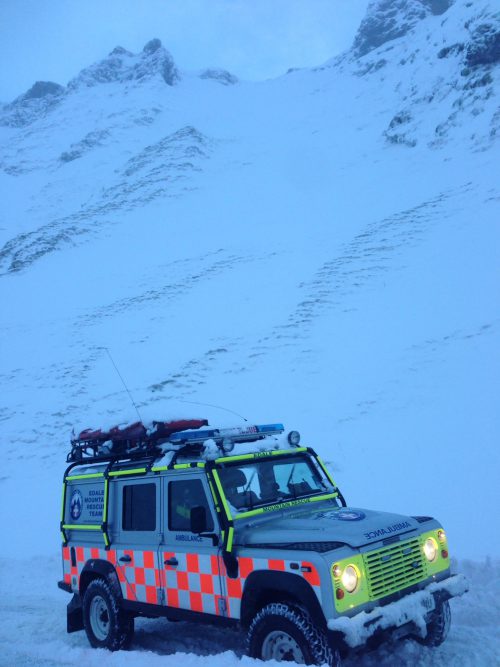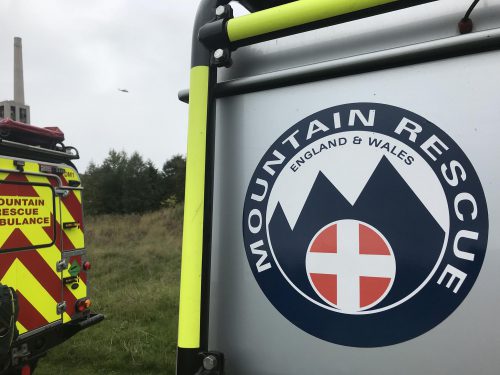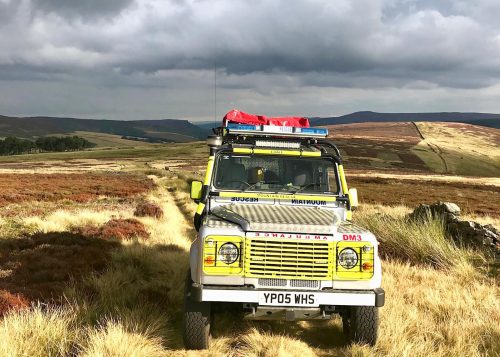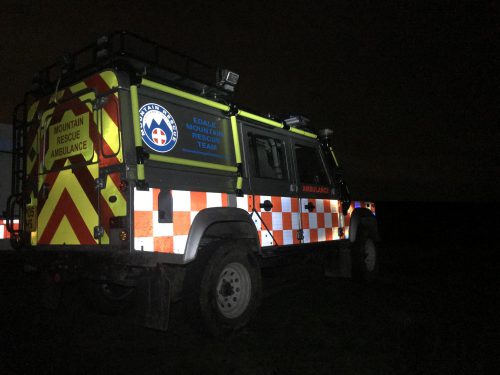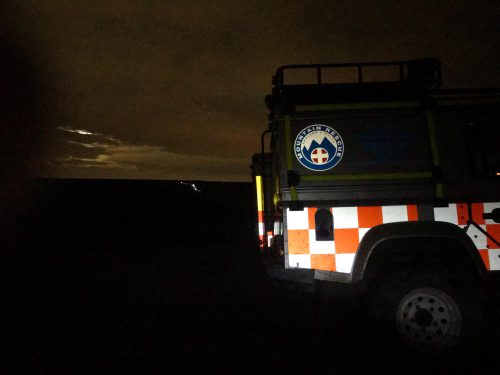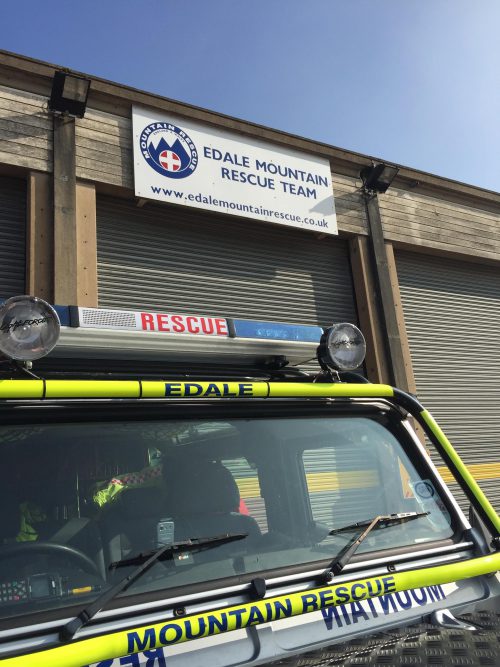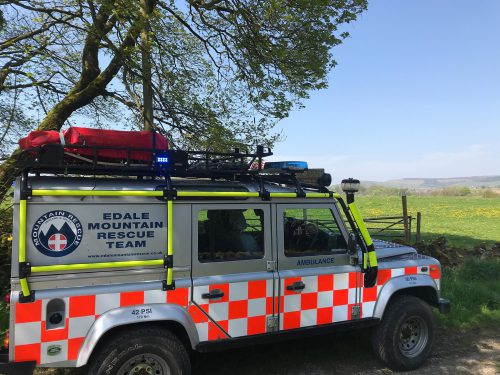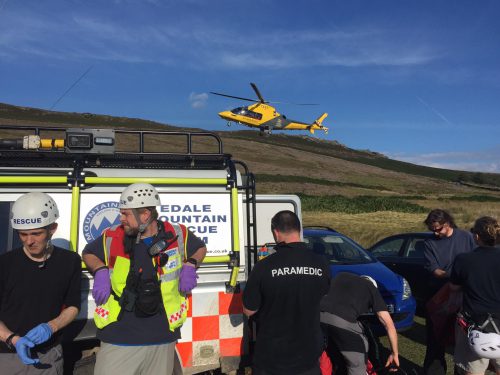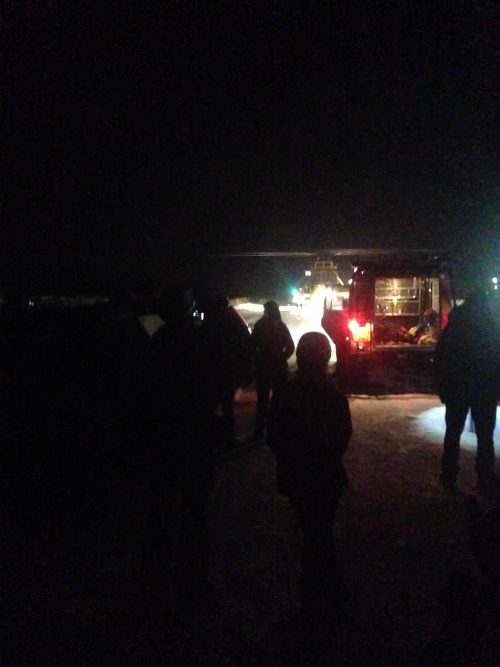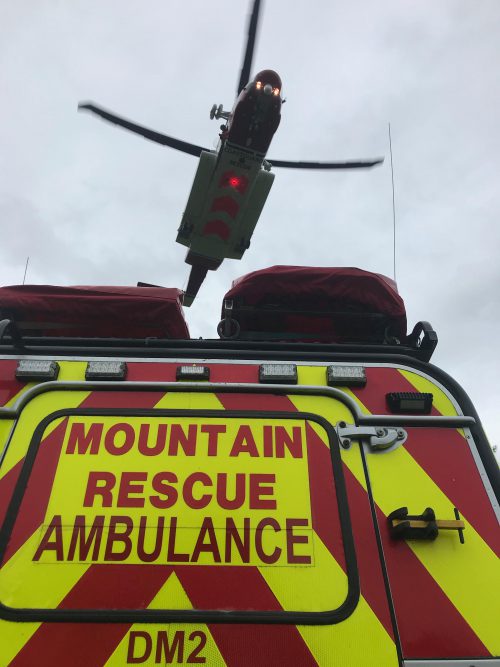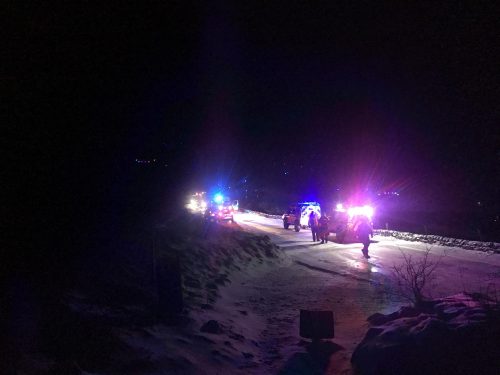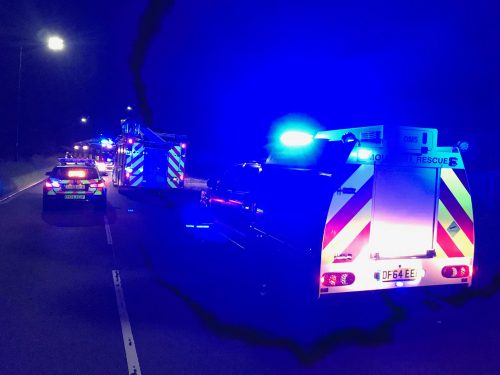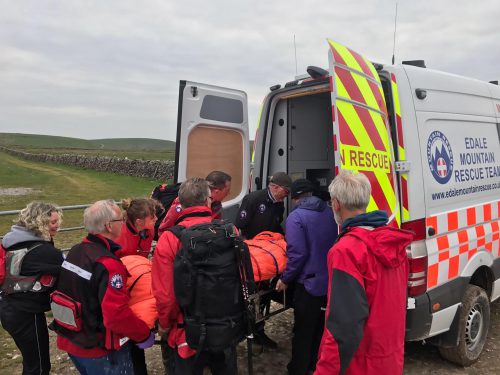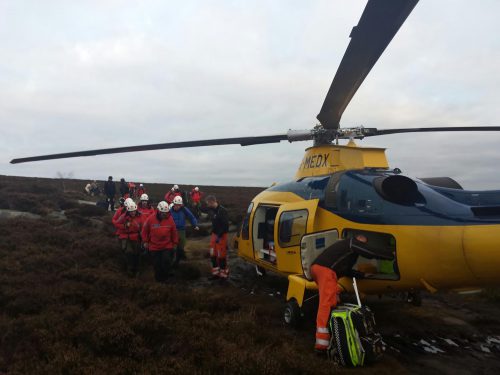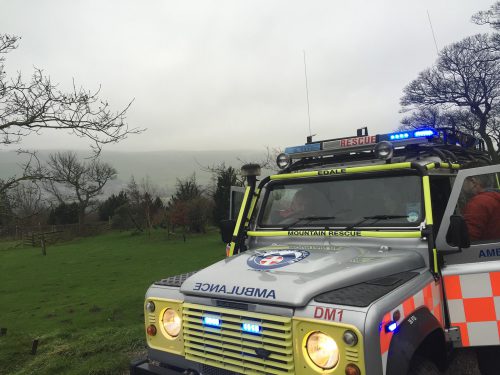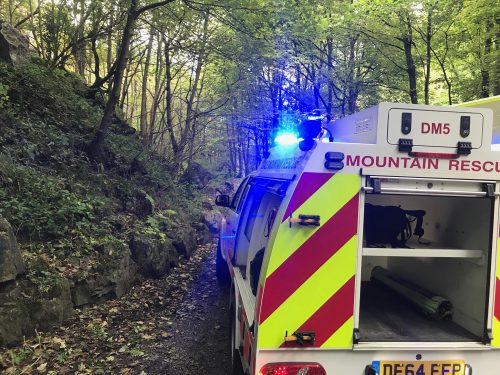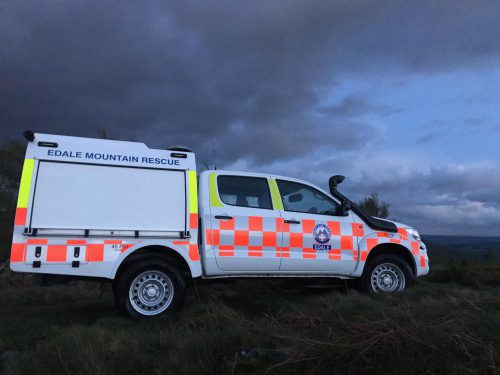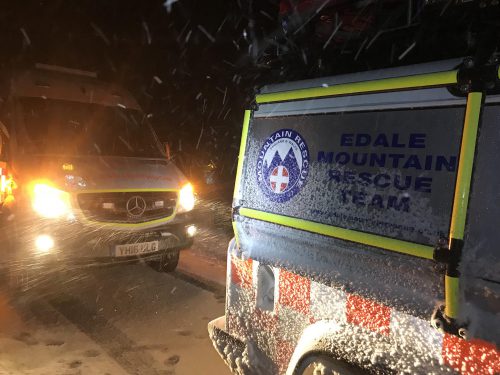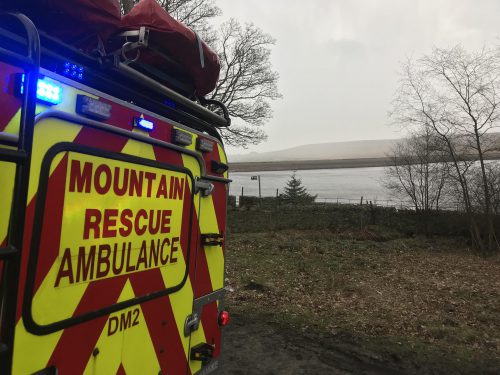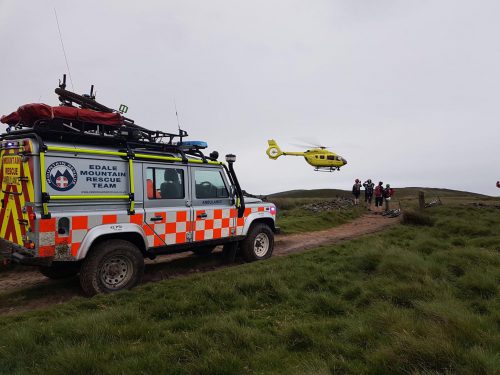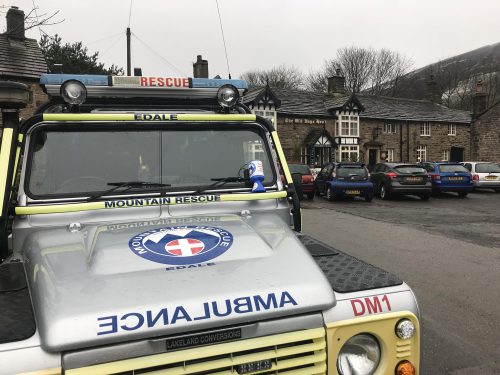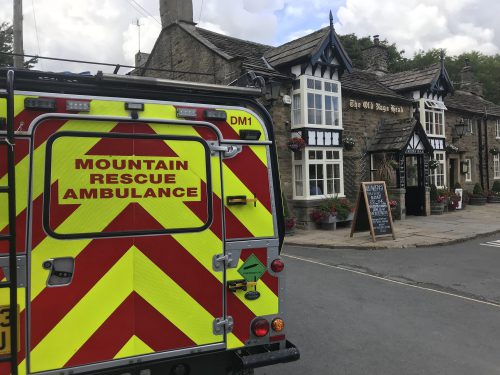About the team
We have a diverse range of technical rescue equipment which ranges from medical devices to crag equipment, stretchers and also water rescue equipment.
The team's equipment
EMRT operates a simple “bag system”, which is standardised, to aid familiarity for all team members. Below is the standard kit which is carried on the team vehicles. Every bag below is taken to the incident site and contains all of the equipment we require to effectively manage any situation on the hill.
We also carry a diverse range of rope and crag rescue equipment which is deployed onto the hill to support any incident which involves rescue at height or on steep and unstable terrain.
Bag 1
This is our medical equipment and contains life-saving equipment, giving team members the capability to give casualties first class care on the hill
Bag 2
This contains our medical gases which all team members are trained to administer
Bag 3
This bag contains “bits & bobs” to help run and control the casualty site
Bag 4
This contains the vital “VacMat” – a giant bean bag in which the casualty is packaged, which splints any injury, enabling support when we evacuate off the hill
Heavy weight casualty bag
This bag which is a specialist, durable and warm sleeping bag to keep casualties warm
The bell stretcher
This is a specialised stretcher designed for use in remote environments. This is a rugged piece of equipment, weighing over 30kg, and is used on almost every incident we deal with. To help team members carry the stretcher and the casualty, we have a large wheel which can be attached to the stretcher to enabling ease of carrying
Vehicles
Team members carry out routine maintenance on the vehicles, including weekly and monthly health checks. The team has a dedicated Vehicle Officer (who is a non-operational Support Group member) who oversees the health of the vehicle and manages any issues that may arise, along side the Equipment Officer.
The vehicles are serviced and MOTed every six months to ensure that they are kept in the best possible shape. This in itself can be a challenge, as there is always something that needs doing!
Before a vehicle is driven it goes through a pre drive check to ensure that it is safe to drive especially on blue light runs. Each vehicle has a weekly check of tyres, fluids etc and each month it has a thorough further in depth check at base.
- Two 110 Landrovers (DM1 and DM2)
- Two Toyota HiLux (DM5 and DM3), specially converted to meet the needs of the team
- One Mercedes 4x4 Incident Control vehicle (DM4)
48 Hours in Mountain Rescue
Below is a video produced by the team to explain what we do as a team.
Giving back to the Hill
A film made for a university final year assignment on the activities of EMRT. Produced over a series of visits to the team by Owen Bellwood
If you require assistance from Mountain Rescue:
DIAL 999
Ask for Police & Mountain Rescue
Give the operator the exact location of the incident, the nature of any injuries, the number of casualties and your phone number
Stay near your telephone and stay put until told otherwise
